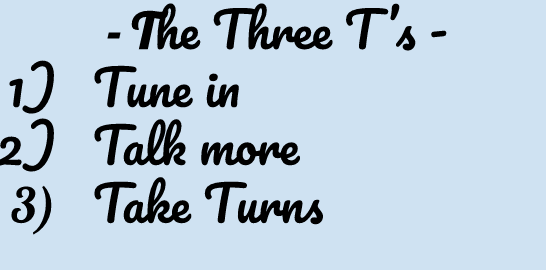How to Talk To Your Baby
When you meet a baby, it is almost instinctual to code-switch into a different talk: our voices become high pitched, our sentences become sing-songy, our facial expressions are exaggerated, and we are prepared to make the silliest face to gain that smile!“Are you the cutest baby in the woooorld? Yes, you are! Yes, you are!”
Although “baby talk” or “parentese” may feel funny to do — some worry that it may even “dumb down” language — it actually is crucial to brain development. “Parentese”, known as Infant Directed Speech (IDS), helps transform everyday noises into meaningful prelinguistic skills (the ways we communicate without using words) and linguistic skills (the ways we communicate using words). Research studies have revealed that babies not only prefer this modulation of the voice where vocal pitch increases, but they also start talking sooner and gain a greater vocabulary. Research by the University of Washington found that 14-month-old babies whose parents were coached to use “parentese” were producing significantly more words than babies in the control group. Below is a video which illustrates a baby’s preference for “parentese”:

To dive in a bit deeper, in the first few years of life, approximately 80-85% of a baby’s brain will have grown! The brain grows three times its size by the age of three, meaning the brain is incredibly active. Because of this, parent interaction during this time is pivotal. When words and interaction are flowing into the baby’s brain, it is creating up to 700-1,000 new connections every single second. These connections create a strong foundation and neurocircuitry, which is the center for all thinking and learning. If you help your child build a robust foundation, your child is going to learn so much better. In this blog, we will discuss ways to build that foundation and empower you, as you are the key architects of your child’s brain development.
Where do I Start?
As stated previously, “parentese” is important to use with your baby. You can go a step further by also incorporating “The Three T’s”. “The Three T’s”, was an approach created by Dana Suskind, Beth Suskind, and Leslie Lewinter-Suskind in the book Thirty Million Words: Building a Child’s Brain. The approach depicts the ways parents and adults can help children enrich their communication skills. Below there is an in depth description of how to implement “The Three T’s” with your child.What are the Three T’s?

Tune In – How?
Pay attention to what your child is observing or engaged with, and lead with that. For example, if your baby is looking at a leaf, talk about it!“Wow! Look at the leaf… Green and soft…”
Just as we do in play therapy, use a more child-led approach. It is important to tune in to what your baby is looking at, rather than prompting him/her to always look at what you want them to look at. Follow your baby’s cues and get interested in what they are looking at.
Below are some tips, created by Michigan State University, that can help you tune in.
Play Detective –
Start looking for clues to truly figure out what your baby likes. What does your baby like? What makes them laugh? The best way to tune in, is to truly know them.
Check out their worldview – Get on their eye level and look at what they’re looking at from their perspective.
Follow your baby’s cues – Although you’ve seen a leaf countless times in your life, remember that for your baby, it could be their first time really engaging with it! Become fascinated with what your baby is fascinated with.
Talk more – How?
It is important to talk with your child, rather than talk at your child. You want your child to be actively involved in the communication process, as this will allow them to understand ways of thinking and sharing thoughts, opinions, and ideas. Not only does this allow children to feel respected and valued because of the mutual level of engagement, but it also teaches the principles of conversational discourse (e.g., listening and waiting for a person to complete his/her thoughts before responding).Michigan State University provides helpful tips when talking with your baby (Fun Fact: We use many of these approaches in speech therapy!)
Narrate your experience – Help your child build vocabulary and understand the world by narrating daily life. It is important to include joint-reading
“Wow! I hear a bird singing. Do you hear that?… Look at all the trees moving with the wind”
Use Parallel Speech – Pretend you are the narrator of what your child is doing. When you are with your child, talk about what they are doing. Include the five sense: what they are seeing, hearing, touching, tasting, and smelling. You can do this during everyday activities (e.g., bath time, feeding time, play time). For example, when your child is playing with blocks: “Blocks! Block goes up, up, up! Ohhh… Blocks fall down!”
Be Specific – Instead of using “thing”, “it”, “that”, “here”, “there” – make sure to include specific language. For example, instead of saying, “Put that there”, say “Put spoon on table”. Also, include adjectives when describing objects, places, and people. Instead of, “look at the sky”, switch to, “look at the big blue sky”.
Talk about past and present – Use language to help your child remember activities they have engaged with, as well as what they are currently engaged with.
“Remember when we went to the zoo? What did we see?… Giraffes!”
Expand and Extend – Once your child is using simple language, expand it to longer sentences. For example, if your child says “More”, answer back “You want more cookies”. By doing this, your child is not only exposed to more vocabulary, but he/she is learning linguistic grammar rules. For example, if your child says “No want!”, answer back, “Oh, you don’t want cheese”.
Taking Turns – How?
By learning to take turns, children learn the rhythm of communication exchanges. It starts as early as when your baby is babbling! When your baby is babbling to you and you answer back, they are learning the back-and-forth exchange of conversational discourse.Be Responsive – It is important to give feedback when your baby is coo-ing, babbling, and even burping! When your baby is babbling “ba-ba-ba”, talk back using “parentese”, while using eye contact. By being responsive, not only does your baby feel secure and loved, but your baby is also learning the value of communication. He/she feels heard!
Keep Things Open-Ended – Instead of asking “what’s that?” or “yes/no” questions all the time, try to also incorporate open-ended questions such as, “Tell me about this toy”. It allows children to express themselves using more vocabulary and word combinations.
Play other turn-taking games – Building turn-taking skills through games also provides a strong foundation for communication skills. Engage your child in rolling a ball back and forth, or telling stories to each other.
What if my child still isn’t talking?
So what if you’re nodding your head while reading this blog and thinking, “I do that already, but my child still isn’t talking”. If your child is not using gestures (e.g., pointing, waving) by 12 months, or not understanding/using at least 50 words by 2 years of age, it is a good idea to be seen by a speech-language pathologist, as he/she may be able to answer your questions in depth. Until then, be on the look out for a blog post that will include some helpful tips to keep in mind to support language development at home!We hope this information provided some insight on how to support your child’s brain development, particularly language development. Please call or visit Exceptional Teletherapy for further information from speech-language pathologists who would be happy to guide you.
-Andrea Scola, M.S., CCC-SLP, Exceptional Speech Therapy Blog Writer.
References:
Brennan, D. (2020, June 02). The Importance of Baby Talk: Tips on How to Talk to Your Baby. Retrieved from https://www.webmd.com/parenting/baby/baby-talk-language#1
Kylie Rymanowicz, M. S. (2018, October 02). The three T’s of communication: Talking more with your child. Retrieved from https://www.canr.msu.edu/news/the_three_ts_of_communication_talking_more
Kylie Rymanowicz, M. S. (2018, October 02). The three T’s of communication: Taking turns with your child. Retrieved from https://www.canr.msu.edu/news/the_three_ts_of_communication_taking_turns_with_your_child
Kylie Rymanowicz, M. S. (2018, October 02). The three T’s of communication: Tuning in to your child. Retrieved from https://www.canr.msu.edu/news/the_three_ts_of_communication_tuning_in_to_your_childMize, L. (2012).
Teach me to talk: Building verbal imitation in toddlers. Shelbyville, KY: Teachmetotalk.com.

